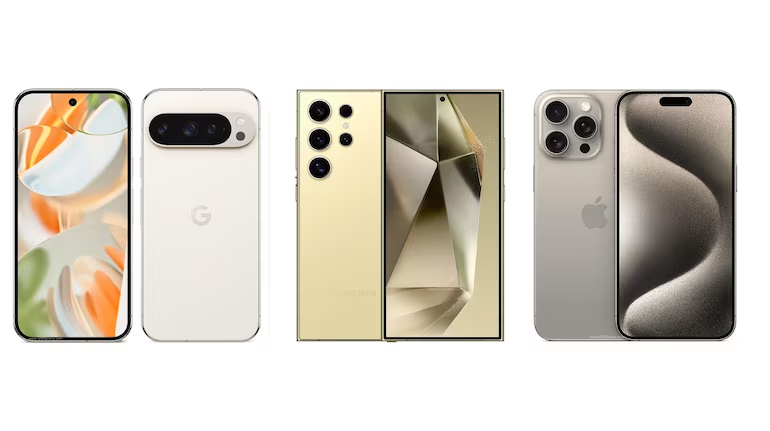Opening thought. A few days ago, Merriam-Webster dropped a post on X — “We are thrilled to announce that our NEW Large Language Model will be released on 11.18.25.” My first reaction? A tired sigh and the thought, “not you too.” But the 35-second video that followed is actually worth your time. They’re trolling the AI enthusiasts — brilliantly. What they’re calling a “Large Language Model” is actually the 12th edition of the Merriam-Webster Collegiate Dictionary, due out next month. Their pitch? An “LLM with over 217,000 parameters” that “never hallucinates.” Clever marketing, sure, but also a pointed reminder that perhaps we should pump the brakes on our AI infatuation. A perfect parody for the tech industry’s breathless hype, and it’s worth asking whether we’ve lost perspective on what intelligence—artificial or otherwise—actually means.


ANALYSIS: BEYOND OTPs ARE BIOMETRIC PAYMENTS
There may well be a world beyond OTPs. Those pesky one-time passwords that define every online transaction we do, may well be a thing of the past. At least that’s the glimpse of the future that India’s leading full-stack payments and banking platform Razorpay, and Yes Bank, are trying to get us all to see. The two have made it possible, on websites and platforms that use Razorpay’s services for the checkout process, to use facial recognition or fingerprint confirmation (some phones have both, some only the former) to authenticate a transaction. Razorpay says this uses India’s first biometric-ready Access Control Server (ACS) and on-device tokenisation as well as passkey standards for seamless fingerprint and face ID authentication. Basically, any user with a Yes Bank credit card can use the biometric authentication method when checking out using Razorpay’s gateway, instead of waiting for and punching in an OTP.

“With Razorpay ACS, we’re not just bringing biometric authentication to every card issuer and merchant – we’re creating a safer experience for users, unlocking new growth opportunities for businesses, and helping banks meet today’s toughest compliance standards with confidence. This is why today means so much to us. It is not just about solving today’s OTP delays or fraud risks, it’s about building the next decade of digital trust, where authentication becomes invisible, intuitive, and growth-focused for businesses, while being effortless and secure for customers,” explains Khilan Haria, Chief Product Officer at Razorpay. For now, only Yes Bank is on board, but the payment firm hopes more banks will find value in this.
Razorpay’s swift response to the Reserve Bank of India (Authentication mechanisms for digital payment transactions) Directions, 2025 circular, released September 25, comes as the regulators too look for more secure and error resistant transaction authentication methods — as Razorpay points out, nearly 35% of transactions fail due to OTP delays, incorrect entries, or redirection issues. RBI’s new framework mandates two-factor authentication, encouraging the move beyond OTP dominance towards more secure, harder-to-fake methods like device tokens and biometrics. In the case of a biometric authenticated transaction, the two factors verification is the specific credit card plus token, and secondly the biometric.
The only question here is, would the more affordable Android phones be accurate enough with fingerprint or facial authentication to successfully confirm a transaction? For now, and as it should be, biometrics are opt-in. I haven’t tried this yet (not a Yes Bank credit card holder), but it’ll be interesting to see if Razorpay and the shopping platforms offer an option to revert to OTP to authenticate a purchase, in case biometrics fail for whatever reason.
EDITOR’S MARGIN: THE END, AT A COST
Last week, I had to be the bearer of bad news, a responsibility I take very seriously, regarding the end of the road for Windows 10 as far as support from Microsoft is concerned. The tech giant is in its final push to get people to upgrade the operating systems to Windows 11 (or buy new PCs altogether). They say that October 14 is when they’ll stop providing any security and feature updates, as well as technical support for PCs that run Windows 10. That said, Security Intelligence Updates for Microsoft Defender Antivirus will roll out on Windows 10 through October 2028, but that barely solves the conundrum.

I apologise in advance for being the bearer of bad news again, but this time, I’m not basing anything on the specifics of timelines and the benefits of Windows 11 versus Windows 10. Basically, online research firm Statcounter says that as of today, more than 40% of active PCs worldwide still run Windows 10 (40.84%, as I write this on Tuesday morning). The October 14 deadline will leave these PCs, and that’s a big number (assuming this hovers around 500 million) at risk with no further security updates on the horizon. Even if I am to assume that 200 or 300 million of those PCs are incompatible with a Windows 11 upgrade, and users would want to keep using them, this opens up potential security hassles.
CAR CORNER: HYUNDAI, GENESIS AND MUSCLE CARS
When you think of powerful muscle cars, the likely first image in your mind is undoubtedly one from the American car makers (and rightly so too, in my opinion — its credit they’ve earned over generations). The Ford Mustang, the Dodge Charger, Pontiac GTO, Dodge Charger, Chevrolet Camaro, the lot, across generations. I was reading just the other day that Korean carmaker Hyundai is testing the next-generation Elantra N high performance sedan (one more generation of internal combustion engine hope, AND expected design inspiration from the N Vision 74 concept), and that got me thinking — have the Koreans ever tried to get into muscle car territory? The answer isn’t a simple yes or no, but the fact is, Hyundai did get very close. In fact, the company had a series of cars with powerful engines back in the day, before the demands of fuel economy, emission guidelines and pure costs (love it when the accountants step in and spoil the party, don’t you?) meant lower power outlays became the norm.
The vehicle that did get very close, the original Hyundai Genesis of 2009 that had options of the 3.8-litre V6 delivering 290 horsepower and the 4.6-litre V8 which was rated at 375 horsepower. That’s some serious grunt, at the slightest tap of the right boot. That legacy continued well into the early 2010s, with the Hyundai Genesis 5.0 that had a V8 rated at 424 horsepower and the Hyundai Equus that was around till 2018, that had a 5.0-litre V8 also rated at 424 horsepower. The current generation Sonata has the option of a 2.5T-GDi rated at 286 horsepower, while there’s the gorgeous Azeria with the Smartstream G3.5 GDi option rated at 296 horsepower. Outliers, mind you, because now when you talk of the most powerful Hyundai cars worldwide, the ones at the top of the list tend to be the electrified IONIQ 5 N and IONIQ 6 N. Different eras, different times. We aren’t the same.
SECOND THOUGHTS: STATE OF OUR INTERNET
Any visual-first platform on the internet, seems overrun by AI generated images. There is no escaping it, even if you wish to. Sam Altman stealing a few GPUs (admittedly OpenAI needs them, but Sam wouldn’t do that) from a store and getting into the crosshairs with security, is just one example of absolute AI generated crap/slop/garbage/junk (whatever you’d like to call it, the world’s your oyster) that’s been all over X and Instagram feeds the past week. The Sora conversation has been so intense that a lot of the spotlight has been removed from others who are equally in the same boat.

Google Images are overrun with AI generations, often undistinguishable. Meta has created a platform too where you can watch endless runs of this slop; I wrote about this in my Neural Dispatch newsletter. And oh, Elon Musk believes X as a source of information can be trustworthy enough to replace Wikipedia (which has its faults, for sure). The very beautiful thing that the internet was pre-2023, has been absolutely ruined in super quick time. Unless you double and triple check, you’ll fall flat one of these days with an AI generation being accepted as reality. Is there any coming back from this?


